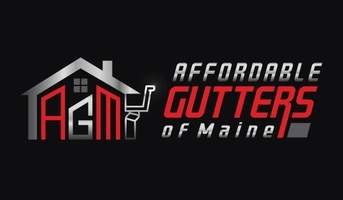Signs You May Need Gutter Guards
While gutter guards aren't always needed, indicators of clogged gutters are clear. Issues stemming from persistent gutter problems include:
- Soggy ground or visible erosion patterns around your house's foundation
- Visibly damaged, sagging, or misaligned gutters that no longer direct rainwater correctly
- Leaky seams or joints where water leaks out of gutters
- Mold growth, interior wall stains, or peeling exterior paint on walls near gutters.
- Frequent clogs that cause overflow and water to spill over gutters
How To Choose a Gutter Guard Installer
Assess Their Experience
When choosing an installation company, look for one with considerable experience and knowledge about many brands and guard types. An experienced company will understand how to take measurements and install gutter guards for your specific needs. Inquire about a company's years of experience and request referrals from local customers.
Verify Proper Licensing and Insurance
Confirm that the providers you're considering have valid licensing, bonds, general liability insurance, and workers compensation coverage. This safeguards you in case of injuries or accidents that could arise. Ask potential providers for current licensing and insurance papers.
Choose Reputable Brands
Look for installers that offer leading trusted gutter guard brands such as Gutter Helmet and LeafFilter. Steer clear of companies that only install generic no-name guards or their own off-brand products. These lesser-known products may not have gone through rigorous quality testing.
Seek Custom Fit Services
For the best performance, guards should be measured and cut on your property to fit your gutters. Pick a company that custom sizes and cuts guards for your home rather than using generic guards. Correctly fitted guards minimize gaps where debris can get trapped.
Examine Warranties
High-quality gutter guard companies usually have 20-year or lifetime warranties that cover rust, clogs, leaks, and other defects. Before choosing a company, thoroughly review the warranty terms for both workmanship and materials guarantees. Warranties are the best way to safeguard your investment into your gutters.
Check Reviews and Referrals
Take some time to look at online reviews on sites such as Google Reviews, the Better Business Bureau (BBB), or Yelp to read about customer experiences. You can also ask neighbors to suggest quality local gutter guard companies. When researching providers, we'd recommend going for companies with consistently positive or good feedback instead of just one or two reviews.
Types of Gutter Guards
There are six primary gutter guard types. These include the following:
- Brush guards are what they sound like: large brush bristles that sit in your gutters and block debris but let water through. Brush guards cost roughly $4.04 per linear foot.
- Foam guards consist of pieces of foam that rest in your gutters to block debris. They're lightweight and easy to install. On average, you can expect to spend $2.46 per linear foot for foam guards.
- Screen guards have large holes that allow water through while blocking debris. Screen guards cost around $4.25 per linear foot.
- Mesh guards have smaller holes than screen guards and similarly block debris while allowing water to flow through. Mesh gutter guards are durable and help debris slide off rather than sit on your gutters. On average, you can expect to pay $4.03 per linear foot for mesh guards.
- Micro-mesh guards have even smaller holes than mesh guards and allow even less debris through than mesh. They are very effective. On average, you can expect to pay $5.11 per linear foot for micro-mesh guards.
- Surface tension guards, sometimes called reverse curve guards, use surface tension to encourage debris to slide off while water flows through into the gutter. They are often visible from the ground. Surface tension guards cost around $3.13 per linear foot.







